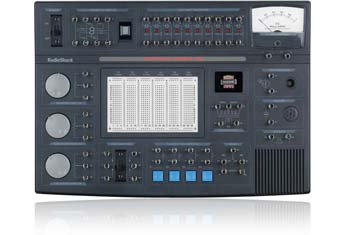Hi RB,
I'll give it a go - I guess I'm qualified, as I do a lot of work with 3-phase machines...
I'll try to start at the basics, and use simple analogies, apologies if I condescend!
OK, first of all single-phase:
The single-phase voltage swings about the Neutral potential (usually tied to earth at the electricity co's transformer), describing a "Sine wave". Why a Sine wave, not a square, a triangle? Imagine if you will the generator - a coil carrying a steady "exciter" current (the generator armature) spins inside another winding causing a voltage to be induced in the stationary winding - the voltage/current is proportional to the speed at which it cuts through the magnetic field, and as the field is unidirectional there will be times when the magnetic field is moving parallel to the winding (with no resulting current), times when it moves at 90* to the winding (when it produces maximum current) - if we illustrate this, we can see that if we pick a particular wire in the armature and track its height (the Sine of the angle, geometrically) as it spins it'll produce a smooth alternating wave, swinging above and below the zero point.
So, we have a nice smooth waveform, either 50Hz (most of the world) or 60Hz (USA, Canada and the Pacific rim).
Now to 3-phase...
Let's imagine there are now 3 sets of stationary windings in our generator, each set at 120* to the others - we can visualise these being swept by the magnetic field one after the other, and the waveforms trailing one another by 120*, and this is exactly what we see if we attach an oscilloscope or similar to the three phases.
If we look at the waveforms plotted out on a graph, they make a nice interlaced pattern - and interestingly we find that the areas under the waveforms referred to the zero line sum to a constant value! (this is one reason why 3-phase motors are smoother in operation, and 3-phase generators are a more even load than single-phase)
Note that we don't have to reference to the neutral (tied to ground) line any more, there's a voltage difference between the three phase terminals so we can connect our load between them and they'll deliver power, either by tying one end of each coil together (Star or Wye connection) or tying one end of each coil to the next coil around (delta connection).
So... we have 3 phase voltages chasing each other around and around a circle, and each coil generating (as an example) 240V AC. If we connect the phases in the star / wye configuration, we have two 240V sources 120* apart - draw this on a graph and measure the distance between the connection points, and we find it gives us 415V (root 3 times the 240V), if we connect in delta the 240V appears directly at the terminals - hence the 3-phase motors and generators can be swapped between the two voltages by swinging links

If we look at the current in the three phases of a motor, they'll be applied to 3 coil windings at 120* to each other, and the magnetic field will chase the maximum current in the coils, setting up a rotating magnetic field, which then drags the motor rotor around with it.
Now, if we swap two of the terminals over (whether star/wye or delta) we'll see the sequence of phases change - from ABCABCABC to ACBACBACB - one is the reverse of the other, so the rotating magnetic field reverses direction so our motor will reverse too!
Now I should start on motor theory - why the motor never runs exactly in step with the rotating field in normal induction motors.... But I think that's for another time!


